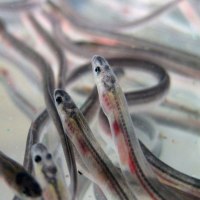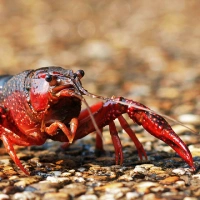‘Plastic is everywhere’: microplastics found in 1950s freshwater fish specimens

Freshwater fish have been swallowing microplastics since at least the 1950s, according to a newly published study. Microplastics – tiny threads and fragments of plastic resulting from the breakdown of waste, clothing and cosmetics – are an increasingly important topic of environmental concern, having been found in deep oceans, on high mountain tops, and even in the atmosphere.
A team of researchers examined preserved freshwater fish specimens from the Chicagoland region, USA, kept in the Field Museum collection. Four species in the museum collection – largemouth bass, channel catfish, sand shiners, and round gobies – had specimen records dating back to 1900. The team’s analysis shows that once plastic manufacturing became industrialised in the 1950s, microplastics began to significantly accumulate in the fishes’ bodies.
“For the last 10 or 15 years it’s kind of been in the public consciousness that there’s a problem with plastic in the water. But really, organisms have probably been exposed to plastic litter since plastic was invented, and we don’t know what that historical context looks like,” says Dr. Tim Hoellein, associate professor of biology at Loyola University Chicago and the corresponding author of the new study, published in the Ecological Applications journal. “Looking at museum specimens is essentially a way we can go back in time.”
Working with Dr. Caleb McMahan, an ichthylogist at the Field Museum, Hoellein and graduate student Loren Hou examined the preserved fish specimens for evidence of microplastics. “We would take these jars full of fish and find specimens that were sort of average, not the biggest or the smallest, and then we used scalpels and tweezers to dissect out the digestive tracts,” says Hou, lead author of the new study. “We tried to get at least five specimens per decade.”
Hou used hydrogen peroxide to look for microplastics in the preserved fishes’ digestive tracts. “It bubbles and fizzes and breaks up all the organic matter, but plastic is resistant to the process,” she says. Under the microscope, microplastics more than half-a-century old were revealed. ”We look at the shape of these little pieces. If the edges are frayed, it’s often organic material, but if it’s really smooth, then it’s most likely microplastic,” says Hou.
“We found that the load of microplastics in the guts of these fishes have basically gone up with the levels of plastic production,” says McMahan. “It’s the same pattern of what they’re finding in marine sediments, it follows the general trend that plastic is everywhere.”
The research team point to a key cause of microplastics discovered in the fish specimens: fabrics. Many of the microplastics they discovered were thread-like and likely to have been washed out of clothing. “It’s plastic on your back, and that’s just not the way that we’ve been thinking about it,” says Hoellein. “So even just thinking about it is a step forward in addressing our purchases and our responsibility.”

The researchers cannot say for sure how microplastic ingestion affected the fish specimens studies, but it is likely to have caused physiological effects. “When you look at the effects of microplastic ingestion, especially long term effects, for organisms such as fish, it causes digestive tract changes, and it also causes increased stress in these organisms,” says Hou.
Their study is published on the heels of the claim that scientific breakthroughs could facilitate the use of bacterial biofilms to trap and recover microplastics from rivers, lakes and seas. Speaking to the Microbiology Society’s Annual Conference at the end of April, Yang Liu, a researcher at Hong Kong Polytechnic University, and colleagues are hopeful that a naturally occurring bacteria can be used to colonise and aggregate microplastics in the environment, causing them to sink for removal.
Liu outlines why microplastic is such an important environmental issue, “Microplastics are not easily bio-degradable, where they retain in the ecosystems for prolonged durations. This results in the uptake of microplastics by organisms, leading to transfer and retention of microplastics down the food chain.
“Due to their huge surface area and adsorption capacity, microplastics can adsorb toxic pollutants, such as pesticides, heavy metals, and drug residues at high concentrations. This leads to biological and chemical toxicity to organisms in the ecosystems and humans after prolonged unintended consumption of such microplastics. Moreover, microplastics are also difficult to remove in wastewater plants, resulting in their undesired release into the environment,” Liu states. Liu and colleagues hope that their nascent technique will eventually be used in wastewater treatment plants to stop microplastics travelling into the wider environment.
For now, the museum specimen study by Hou and colleagues reminds us that for all its contemporary interest, microplastic pollution is nothing new. Hou and colleagues hope their study will act as a ‘wake-up call’ for the public and politicians to take notice of the widespread and pervasive nature of microplastic pollution in our aquatic environments.
+++















Comments are closed.